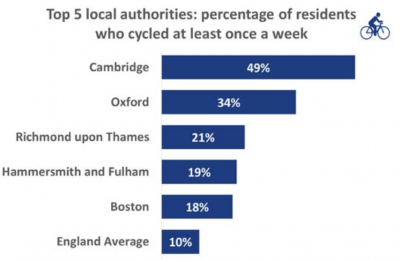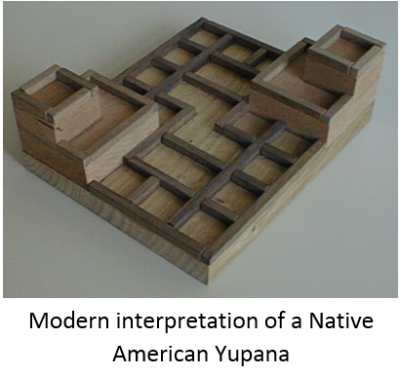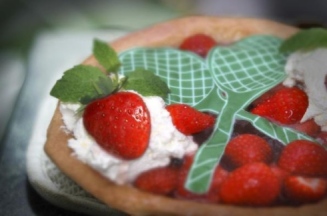The Importance Of Times Tables
October 15, 2015 § Leave a comment
As much as children may hate them, times tables are one of the key foundation stones of good maths ability. Even when you get to GCSE level, knowledge of times tables is very important: it helps with factors and multiples, it makes long multiplication and long division considerably quicker and easier and times tables will crop up in practically every maths topic in one way or another.
For many children, learning times tables is hard and can be frustrating. But learning them is simply a case of practice makes perfect; the more you do them, the easier it will be to remember them!
But, it’s not just a case of learning the times tables in order. A large number of children will be able to learn their times tables when they are saying them all in the correct order, but will they be able to answer 6 x 5 without having to go through 5, 10, 15, 20, 25, 30? Being able to recall the times tables facts without having to think too much about it will be a great advantage for future maths work, so it’s worth putting in the effort to learn them that way.
Here’s something to try:
As an example, say that your child needs to know their 4 times tables. Start by making sure they can say them in order quickly and without having to think about it. To get to that stage, each day get them to say them all the way through, perhaps when they are having breakfast or before bedtime. Once they have mastered that, start calling out random 4 times tables questions for them to answer. Do 2 or 3 at a time and, for each one they get right, give them a star. Rewards make times tables considerably less tedious!
A Quarter of a Teaspoon
November 3, 2014 § Leave a comment
I was measuring out spices for a curry mix at the weekend and it asked for a quarter of a teaspoon of turmeric. I opened up the cutlery drawer and pulled out 4 different teaspoons . . . and they were all different sizes! Did I want a quarter of my biggest teaspoon or my smallest one . . . or one in between?! And how an earth am I supposed to work out a quarter of it?!
It can all make for a pretty dicey cooking experience! Not to mention the advice that we have had in recent years not to use a teaspoon from the cutlery drawer when measuring out medicines for children.
So, what exactly is a teaspoon supposed to be? In fluid measures, it should be 5 millilitres. And in dry measures, it’s about 8-10 grams, but that depends on what you are measuring. And, of course, those sizes are for a LEVEL teaspoon – don’t forget that you can also get rounded teaspoons and heaped ones too!
The only way you are ever going to be exact is by getting a special set of measuring spoons. As it goes, for cooking I just pick a teaspoon, stick in what I think is about right and hope for the best!
Some handy kitchen measures: Hints and Things
The Wonderful World of Chocolate and Maths!
October 14, 2014 § Leave a comment
It’s chocolate week this week – a time when you actually have an excuse for indulging!
And at the same time, Ireland are enjoying maths week . . . maybe a less pleasurable experience for most people!
So, let’s mix it together and take a look at the importance of maths in chocolate.
 We are all used to seeing the percentages on the front of more high-end chocolate bars, saying for example “70% cocoa”. But what does that actually mean?
We are all used to seeing the percentages on the front of more high-end chocolate bars, saying for example “70% cocoa”. But what does that actually mean?
The percentages on the front of chocolate bars refer to weight: they refer to how much of the total weight of the chocolate bar is made up of actual cocoa bean products. By cocoa bean products, we mean cocoa butter and cocoa solids. So, “70% cocoa” means that 70% of the weight of the chocolate bar is made up of cocoa bean products, while the rest is mostly sugar (yikes!) with a touch of vanilla, lecithin (this makes it smooth and creamy) and milk solids if it’s milk chocolate or white chocolate.
A typical cocoa bean is made up of 54 percent cocoa butter and 46 percent cocoa solids (the solids are often ground down and used to make cocoa powder). Different amounts of the cocoa butter and cocoa solids will be used depending on what type of chocolate you eat. White chocolate, for instance, contains cocoa butter without the cocoa solids.
So, as you sit back and tuck in to a chocolate-y treat, spare a thought for those clever chocolatiers who have mixed the right percentages together to make it!
New National Curriculum for Maths
September 21, 2014 § Leave a comment
The new curriculum came into force this month for everyone except Years 2 and 6. Although it may seem a little daunting, the new maths curriculum is nothing to be afraid of! It seems much harder than the previous curriculum, but in reality, they are just learning topics at a slightly earlier age so that they can build on that knowledge for a longer period of time. In maths, some topics have actually been removed from the Key Stage 2 curriculum, such as probability.
By starting the teaching earlier, the theory is that they can then go into much more detail and ensure that children are able to get to the stage where they understand the methods and can solve problems rather than just perform calculations.
Take a look at our Year 1 Maths page to see the topics Year 1 students will be covering. And don’t forget to try our brand new Year 1 Fractions test!
Our Homage to Cycling Statistics!
August 17, 2014 § Leave a comment
We love statistics! Yes, we may say we hate maths, but as a nation we seem to get great pleasure from crunching those numbers and finding out what percentage of people do what, when and where.
So, as very proud sponsors of TNT BMX Club, we thought we would celebrate their first club race today with a few cycling statistics.
The Department for Transport releases walking and cycling statistics each year and this year they released the data from 2012/13:
 Well done to Cambridge and Oxford! See . . . clever people like to cycle!
Well done to Cambridge and Oxford! See . . . clever people like to cycle!
 Come on girls! We need to get cycling! I know 2 people who completed the Prudential 100 last week – one was a 30-year old woman and the other was a 72-year old man, so well done to minority cyclists!
Come on girls! We need to get cycling! I know 2 people who completed the Prudential 100 last week – one was a 30-year old woman and the other was a 72-year old man, so well done to minority cyclists!
But whatever the statistics say, ENJOY YOUR CYCLING! And good luck to everyone taking part in the TNT BMX races this week!
The Murky World of BODMAS!
August 3, 2014 § Leave a comment
Recently a parent asked me about a question they had come across in one of their 11 Plus practice papers. Their child had put E as the answer and his Mum was sure this was correct, but the answer book said it should have been A.
The answer came down to BODMAS (or BIDMAS). It’s one of those awkward little things that no one ever remembers! But, it’s something that rears its head in 11 Plus, SATs and GCSE exams.
BODMAS is basically the order in which we complete a complex sum. It stands for:
Brackets
Orders (or Indices)
Division
Multiplication
Addition
Subtraction
It reminds us that when dealing with a sum, we have to do whatever is in the brackets first, then deal with any indices (e.g. square numbers or cube numbers), then we can do divisions and multiplications, then finally additions and subtractions.
We must be careful, though, because all is not as it seems when it comes to BODMAS!
Although Addition comes before Subtraction, this does not mean that all the additions have to be done before the subtractions. For instance, 6 – 3 + 1 is done from left to right, so the answer is 4. If you were to do the adding first, you would get an answer of 2, but this is not correct. So, really, BODMAS should be read as:
Brackets first
Orders or Indices next
Then any Divisions and Multiplications in order from left to right
Then any Additions and Subtractions in order from left to right
Basically, BODMAS sounds better than BOMDSA! It’s just a reminder to do your multiplications and divisions before moving on to your additions and subtractions.
So, that brings us to the question the parent raised. The question was:
Which of the following gives the same answer as 6 x 2 + 12?
A. 48 – 8 x 3 B. 3 + 11 x 2 C. 3 x 7 D. 24 ÷ 2 – 1 E. 2 + 4 x 4
Using the rules of BODMAS, 6 x 2 + 12 = 12 + 12 = 24
A. 48 – 8 x 3 = 48 – 24 = 24
B. 3 + 11 x 2 = 3 + 22 = 25
C. 3 x 7 = 21
D. 24 ÷ 2 – 1 = 12 – 1 = 11
E. 2 + 4 x 4 = 2 + 16 = 18
And that is why the answer is A, not E!
Summer Holidays and 11 Plus Revision
July 11, 2014 § Leave a comment
Your 10 year old thinks: “Yay, 6 weeks off school!”
You think: “Oh no, 6 weeks without school – what if they forget everything?!”
It’s that time of year again when parents and children are working hard towards their 11+ exams . . . and many students have to sit the exam almost immediately after a long holiday from school.
The 11 plus is, of course, a very important exam. But, we mustn’t forget that they are only 10 year olds and they have been working hard at school all year. Relaxation time is vital, otherwise they will suffer “burn out” before they get to the test. So here is a handy 11 plus revision timetable for the summer to make it an efficient and enjoyable (or as enjoyable as schoolwork can be!) experience.
Even if you are away on holiday, take some books away with you. Your child will feel more relaxed on holiday, so may be more inclined to do some work.
The timetable is just a guideline, each child is different. 11+ revision should be varied with each child’s personality and work ethic. Try our 11+ revision worksheets to help in preparing your child. But most of all, enjoy your summer holidays!
The Wonderful World of Wimbledon
June 29, 2014 § Leave a comment
Wimbledon is in full swing: strawberries and cream and crowds of people in ponchos shivering in the rain on Henman Hill – what could be more British?!
Like all sports, tennis is all based on numbers. But, unlike sports like football, there isn’t a simple one-nil scoring system; instead we have scores like thirty-love and deuce. So, where did it all come from?
There are mixed opinions out there. The most common explanation is that it comes from Medieval France, when they used a clock face to help them with scoring. They would move the hands to 15 minutes, 30 minutes, 45 minutes, then 60 when they won the game. When deuce came in, the 45 changed to 40 – they would then move the hand to 50 when there was an advantage, then 60 to win the game.
Deuce comes from the French term “à deux”, meaning “at two” (in other words, meaning they need two more points to win). And Love comes from the French term “l’oeuf” meaning “the egg” because a zero looks like an egg.
I’m afraid our British tradition looks decidedly French . . . !
But here are some other fascinating numbers from the world of Wimbledon:
- The fastest serve recorded at Wimbledon was from Taylor Dent in 2010. It was 148mph – that’s an incredibly 66 metres per second!
- An average of 28 000 kg of strawberries are eaten at Wimbledon during the fortnight . . . . washed down with 7 000 litres of fresh cream!
- The longest match was played by John Isner and Nicolas Mahut in 2010. It lasted for 11 hours and 5 minutes and was played over 3 days. Their final tie-break went to 70-68. Bet they needed a foot rub after that!
Careers In Maths
June 14, 2014 § Leave a comment
So, what good is maths to you in the real world? It can sometimes seem as though maths is just one of those subjects you have to do at school, then immediately forget once all the exams are over (except for the odd bank statement you have to analyse!).
And, for those with a passion for maths, you may ask yourself what pursuing maths can actually do for you. Surely the only thing you’d end up being would be an accountant or a maths teacher. But, maths is used more than you may think in working life. Every day, we make calculations that we may not even be aware of. And some places of work involve more mathematics than others. This site has some great videos showing how some people use maths in working life: mathscareers.org
There are a whole range of sectors that like to employ graduates with mathematical skills:
Aerospace, Automotive companies, Construction, Engineering, Environmental work, Healthcare, IT, Manufacturing, Scientific Research, Telecoms, Transport, Utility companies . . . and that’s just naming a few!
There are so many apprenticeship schemes and graduate schemes out there for people who have a knack for maths. This site lists some of the options available: maths careers
So, maybe maths isn’t the dead-end option you may think it is; in fact, it opens a whole world of opportunities.
The Great Modern Abacus Debate
June 1, 2014 § Leave a comment
Recently, there has been a lot of debate over the use of calculators in the Key Stage 2 SATs exams. With the removal of the calculator paper, some are concerned that this will affect students in later stages of education.
Some may say that the calculator is a relatively recent piece of technology, but in reality we have been using tools to help us make calculations for thousands of years. The abacus is thought to have been used in Oriental lands as long ago as 3000 BC.
Since then, it has been adapted by many cultures and lands, leaving us with the abacus we recognise today. Even the Native Americans used a form of abacus called a Quipu, which was a system of knotted cords. They also used a Yupana to carry out their calculations and researchers have discovered that this was based on the Fibonacci Sequence. 
The abacus is more than just pretty beads used to show numbers; it can be used for a number of calculations: addition, subtraction, multiplication, division and even square roots and cube roots. There are a lot of variations, but the most common abacuses that we see today consist of 2 sections of beads in rows. The two sections are 5’s and 1’s and the rows indicate place value, e.g. units, tens, hundreds. So, 623 for instance would have three “1” beads in the units row, two “1” beads in the tens row and in the hundreds row there would be one “5” bead and one “1” bead.
Despite the growth in popularity of pocket calculators, abacuses are still in use in some parts of the world. Merchants and traders in certain parts of Asia and Africa still use an abacus for business. And, China and Japan still teach children in school how to use an abacus. In fact, using a Soroban (Japanese abacus), Japanese children are able to complete calculations as quickly as someone using a calculator . . . sometimes quicker!
So, whatever side of the fence we sit on when it comes to the debate on calculator papers, we can’t deny that calculation devices are a long-standing tradition in human history. And with the development of the scientific calculator, we have opened the way for students to be able to perform all sorts of mathematical functions, including trigonometry and logarithms. The important thing is that we don’t lose the ability to use our brains – there’s something to be said for mental arithmetic!


